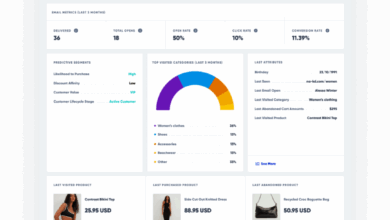Why Sydney Sweeney’s Ad Sparked a Culture War

A larger-than-life billboard in Times Square with Sydney Sweeney has ignited a debate stretching far beyond denim. American Eagle’s new campaign, led by Sydney Sweeney, played at the boundary where marketing stunts meet cultural flashpoints. Sweeney, a celebrated TV star, appeared next to the phrase, “Sydney Sweeney has great genes.” With a can of spray paint, she covered “genes” and rewrote it as “Jeans,” infusing the AD with playfulness. In moments, the image raced through social media, splitting viewers along lines of identity, diversity and authenticity. The campaign’s provocative pivot raised questions about who shapes brand narratives and how social tides can elevate or erode a brand overnight.

The Double Entendre: When Wordplay Cuts Deep
Wordplay has long been a staple of out-of-home advertising. Brands love to toy with double meanings, banking on clever language to capture attention. The “great genes/jeans” pun aimed to highlight Sydney Sweeney’s appeal and her partnership with the denim brand. Yet the choice of “genes” instantly triggered reactions centered on race and privilege. For many, the phrase did not evoke a lighthearted moment. Instead, it brought to mind debates around eugenics, whiteness and inherited advantage in popular culture. What was meant as an innocent nod to fashion became, for some, a tacit endorsement of outdated and harmful ideals.
Sharing and commenting amplified this unease. A tweet from a woman of color declared, “This is what happens when you have no people of color in the room.” The comment resonated, gathering traction and serving as a rallying point for critics who argued the team behind the AD failed to anticipate how loaded phrases like “great genes” can be. In today’s brand ecosystem, word choice matters more than ever, transforming a playful pun into a point of contention.
Diversity and Representation: Who Gets to Be Seen?
The Absence of Inclusion on the Creative Team
The controversy swiftly centered not just on language, but on representation behind the scenes. Critics emphasized that a lack of diverse perspectives was likely responsible for the oversight. When brands assemble homogeneous teams, blind spots become inevitable. Messages that might seem innocuous during brainstorming sessions can unintentionally exclude or alienate audiences once they go public.
Diversity in creative decision-making is now an expectation, not just a best practice. Audiences care about who crafts the story as much as what the story says. Brands who ignore these realities can misstep, risking backlash that unravels hard-won trust.
Visual Imagery and Broader Implications
Campaign visuals faced similar scrutiny. Not only did critics target the billboard’s message, they called out a perceived lack of inclusive casting. Some questioned whether the campaign accurately reflected the audience it hoped to attract, or whether it simply mirrored historic standards of beauty and desirability. As social media poured over the AD, many argued that representation matters in every frame, from model selection to narrative framing.
Culture Wars: Hijacking the Narrative
Unexpected Endorsements from Political Influencers
The ad’s fallout did not remain confined to marketing circles. Right-wing influencers soon picked sides, reframing the campaign as a stand against so-called “wokeness.” Commentators like Nicole arbor posted, “Normal hot girls are BACK. Not trans. Not gay. Not obese. Just a hot girl in jeans.” Another, Carmine Sabia, praised the brand for refusing to apologize, claiming, “Woke is dead. American Eagle didn’t apologize, and Sydney Sweeney didn’t back down.” Each post drew thousands of likes, sparking even more debate and transforming the campaign into headline fuel far beyond fashion media.
These responses transformed the AD into a lightning rod for discussions around identity, gender and corporate accountability. Rather than uniting audiences around a common vision of self-expression or style, the campaign became a pawn in broader battles over social values.
Cultural Flashpoints and Consumer Loyalty
Brand messages have always been ripe for interpretation, but few anticipated just how quickly an AD could be reframed and weaponized in the culture war era. Both negative and positive feedback brought new visibility, but also new risks. Suddenly, the campaign’s playful surface masked deeper tensions that refused to stay tucked away in the comment sections. For some brands, this kind of viral visibility translates to stronger loyalty among fans. For others, it destabilizes trust, pushing divided groups further apart.

Brand Decisions in the Age of Social Scrutiny
Intentional Risks and the Power of Celebrity
American Eagle’s leadership revealed an insider’s view on their strategy. According to Ashley Schapiro, “Sydney wanted to push it. She said, ‘I’m game.’ So we leaned in.” By inviting Sweeney to take creative risks and rewrite the billboard herself, the brand aimed to leverage her authenticity. They also invested heavily in digital initiatives, spending more than on any previous AD. The campaign used AI tools, 3D billboards, AR filters and Snap integration to reach a Gen Z audience deeply versed in internet culture.
Modern advertising strategies demand ever-greater risk tolerance. With younger audiences favoring bolder statements and immersive platforms, brands seek to craft viral moments, even knowing these can easily spiral out of control. The Sweeney campaign’s massive digital push underscored the high stakes of connecting with Gen Z: One viral move can drive financial gains — or spark firestorms of commentary overnight.
The High Cost and Payoff of Controversy
For all the discussion and outrage, the campaign’s short-term impact on sales and brand engagement proved significant. Reports noted that American Eagle’s stock surged by 10 to 16 percent during the buzz. The “Sydney Jean” limited edition sold out in select locations. Revenue from the denim line supported the Crisis Text Line, a move that showcased the company’s ongoing efforts to anchor activism to sales. Still, public focus gravitated toward the controversy, often overlooking philanthropic intentions behind the project.
The relationship between controversy and financial returns remains fraught. Brand managers now face high-wire decisions: Appease a vocal minority or ride the viral wave for potential gains. For some, a provocative campaign is worth the gamble. For others, the reputational risks loom larger.
Identity, Trust and the Modern Consumer
Brand Fragility and Market Perceptions
Major publications, from Teen Vogue to The Cut, noted that harm may not be the ad’s intent, but results still shape perception. Marketers know that trust is thin, especially when dealing with identity-driven audiences. The viral response to Sweeney’s AD highlighted how public confidence can deteriorate in the span of a few hours. Years of investment in brand image can face reevaluation in a single campaign cycle.
Meanwhile, some cultural commentators noted signs of “backlash fatigue.” In an environment where controversy dominates attention, there are signs that consumers have become somewhat inured to provocative creative risks. This raises questions for marketers about how far to push and how quickly audiences will adapt to fresh provocations.

Audience Fatigue and the Future of Advertising Stunts
As campaigns compete for cultural bandwidth, the appetite for outrage faces limits. Repeated waves of backlash have primed some consumers to expect and sometimes dismiss these viral moments. At the same time, sustained innovation in tech-powered campaigns means that risks, both reputational and financial, are not fading anytime soon. Brands balancing creativity with social awareness must read the room closely, integrating real-time feedback while staying on mission.
Marketing trailblazers must keep asking pressing questions. Who drives the conversation? Whose voices get amplified in creative spaces? How can campaigns ignite excitement without stepping on societal fault lines? The fate of Sweeney’s AD, more than just a story about jeans, signals how brands walk a tightrope between visibility and vulnerability in an always-connected era.




